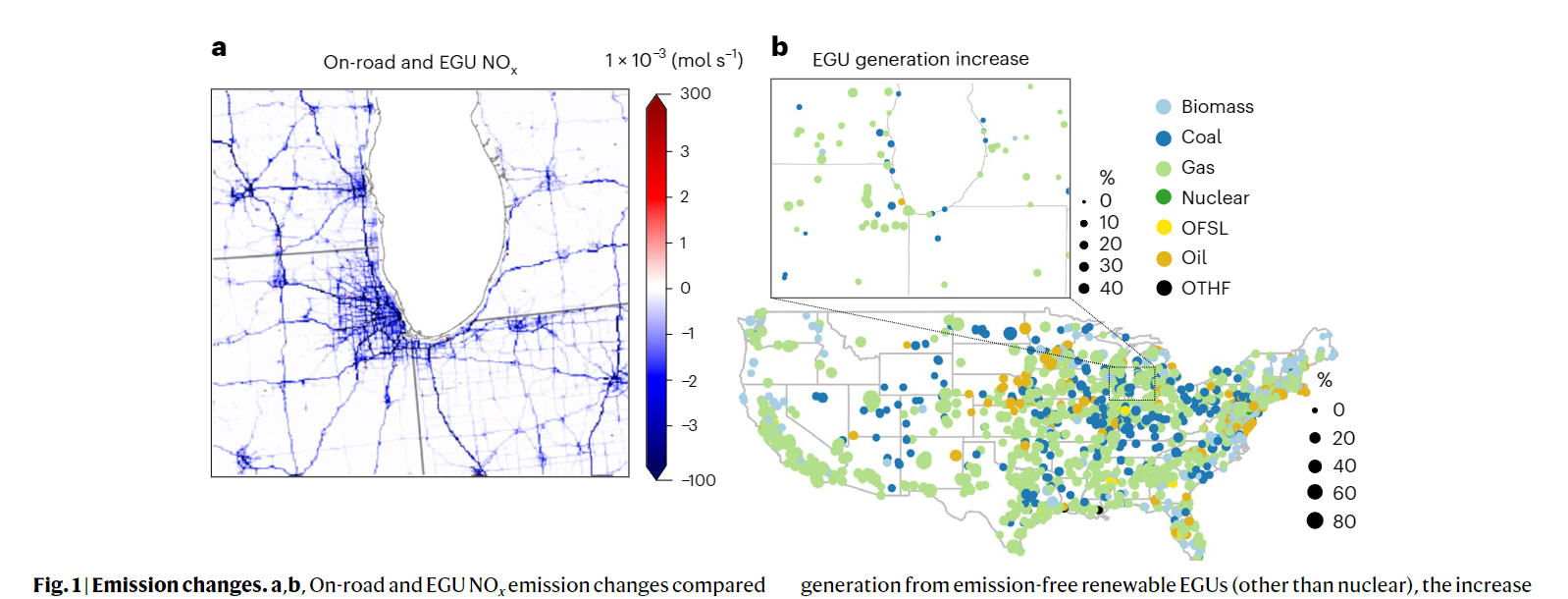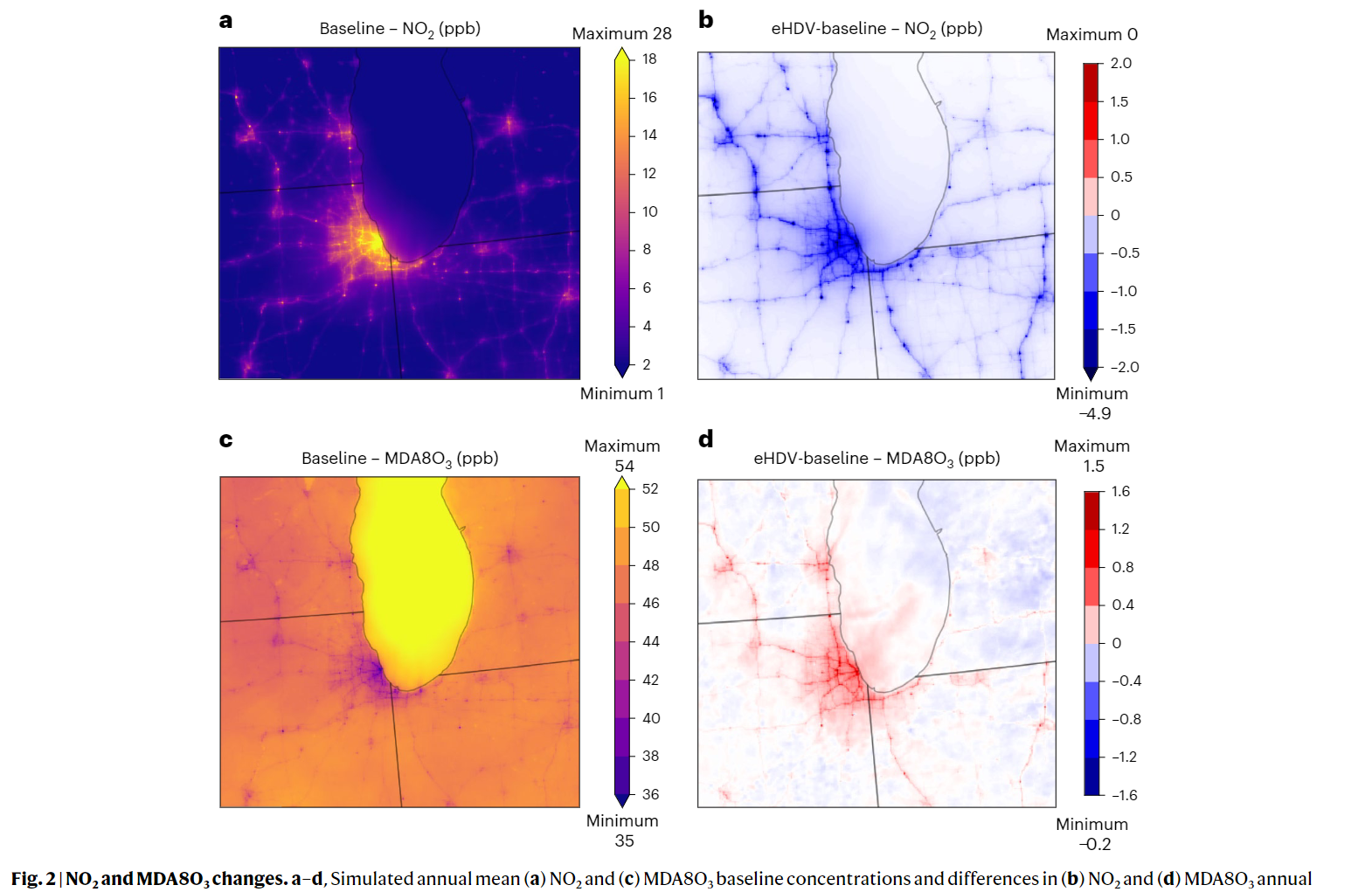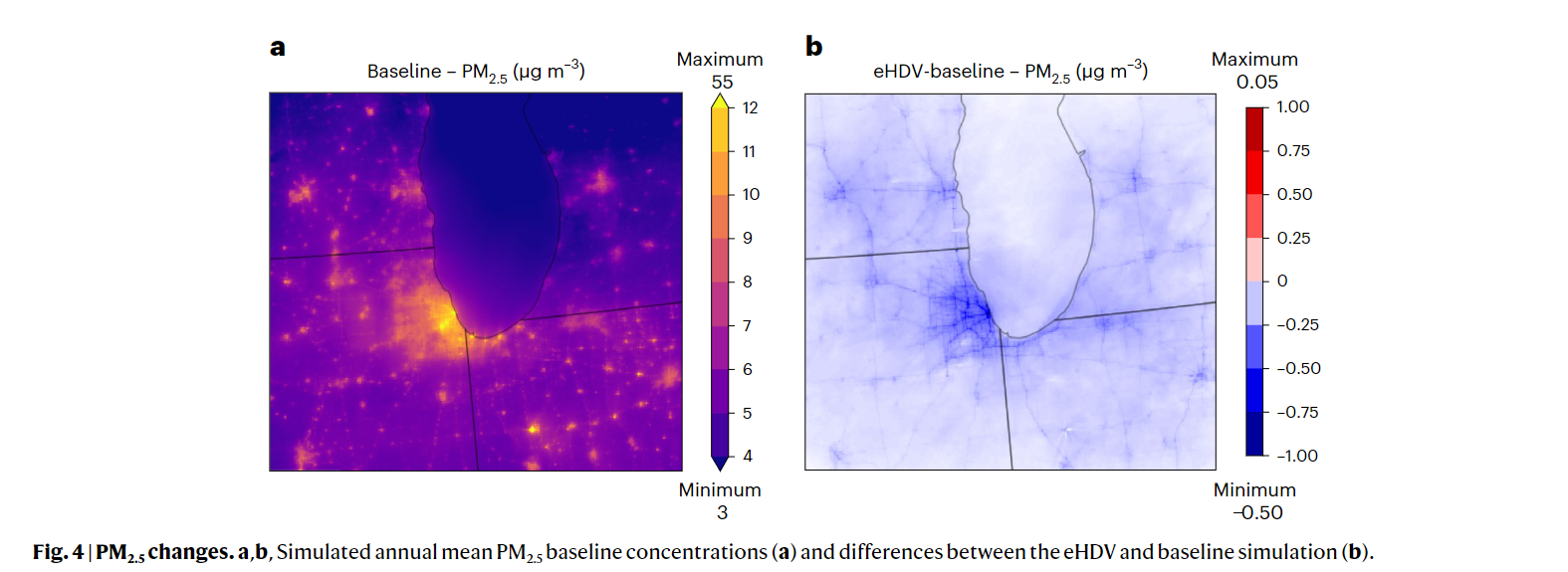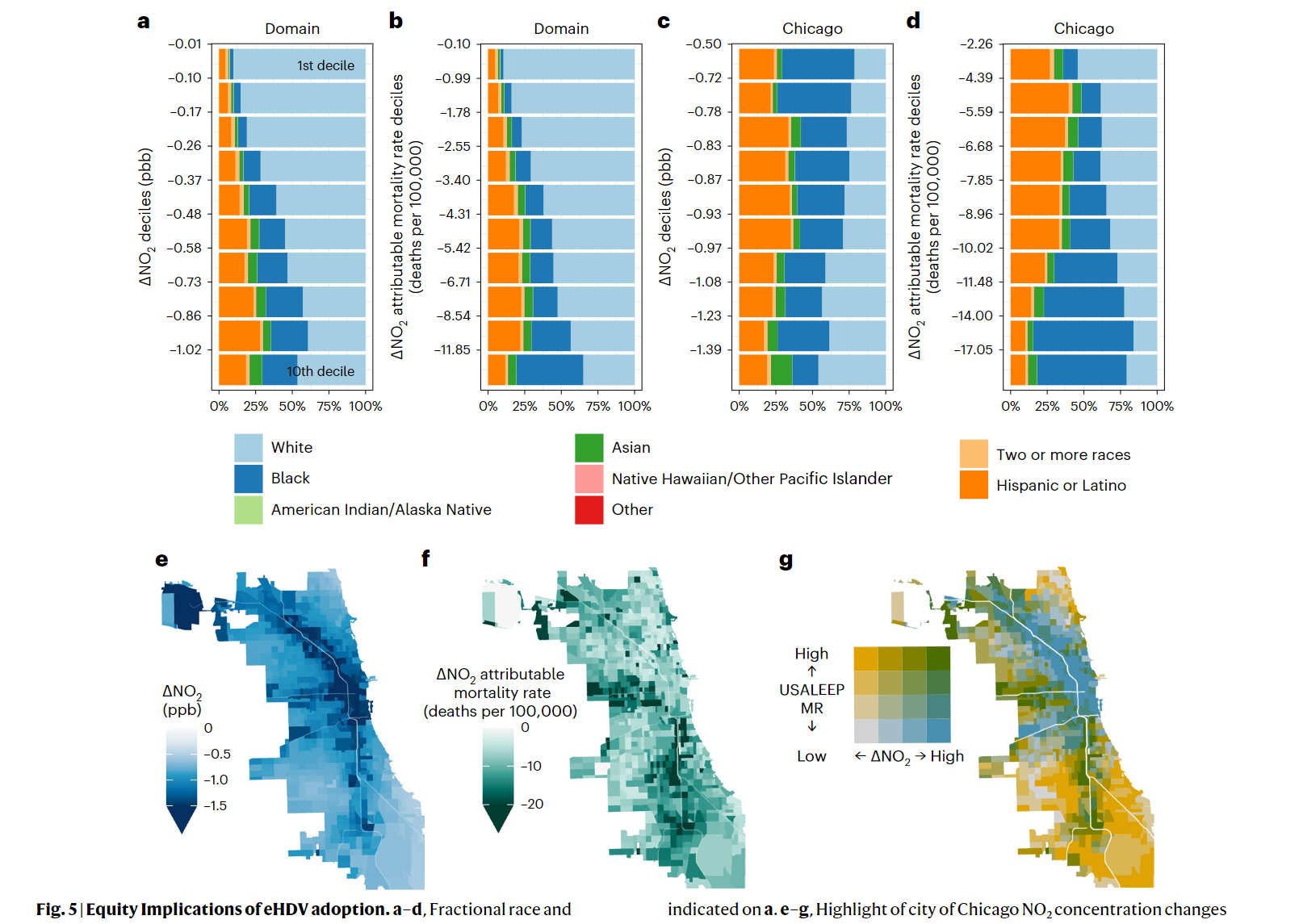Objective:
- The associated air-quality and public health implications that have not yet been widely assessed at the fine spatial resolutions needed to determine different exposure between population subgroups in urban setting
Case:
Methodology:
- WRF-CMAQ model
- SMOKE system
- Multiscale air quality model: CMAQ
Data Source: Open
- Vehicle-to-EGU electricity assignment and emission remapping algorithm: EPA
- Population and demographic: American community survey
- Incidence rate: Industrial economic, incorporated
Findings:
- An instantaneous transition to 30% eHDVs results in on-road emission reductions that more than offset emission increases from EGUs
- The highest-magnitude emission reductions occur along major road networks and within densely populated areas

- 30% adoption of eHDVs reduces population-weighted PM2.5 concentrations

- 0.42%-0.05% decreases of all-cause baseline mortality are associated with reductions in NO2 and PM 2.5



Coding Reference:





